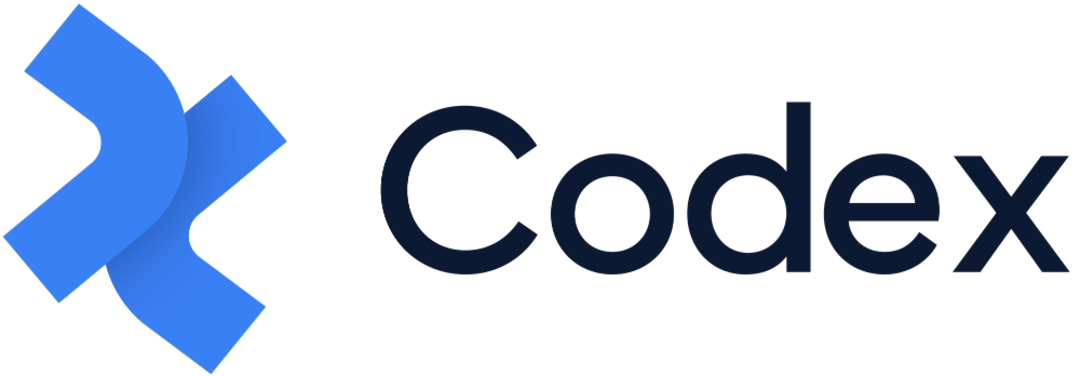Getting Started
An introduction on how to start using Codex, including a user guide structure, platform access for both new and existing users, and an overview of the main components or entities within Codex at the organization and site level.
Guide Structure
The User Guide provides users with information and steps to efficiently use all the features, functions, and tools in Codex. It is structured as follows:
Navigating in Codex: This guide provides a basic overview of efficient feature utilization and platform navigation. Read more
Working with Assets: Learn how to manage digital assets by uploading, storing, and organizing them within the Asset Management Hub. Read more
Searching, Filtering, and Sorting Assets: Quickly locate and organize assets according to your needs with this guide on searching, filtering, and sorting functionalities. Read more
Getting Started with Content Creation: Explore creating entries using models, managing entries, and using the configuration side panel for editing. Read more
Searching and Filtering Entries: Easily locate and organize entries with this overview of search and filter functions tailored to your needs. Read more
Working with Rich Content Field: Master the creation and management of rich, structured content using different content types and fields. Read more
Content Views: Create personalized and shared views for quick entry access with this guide on setting up custom content views. Read more
Sections: Learn to create and manage content sections for your site's organization and structure. Read more
Lists: Understand how to create lists tailored to specific requirements or purposes, ensuring efficient entry management. Read more
URLs: Customize and manage site URLs for your content using this guide on creating and managing custom URLs. Read more
Tags: Create and manage tags within Codex for organizing and categorizing content effectively. Read more
Working with Models: Build custom models for your organization using various fields and content types for structured data management. Read more
Adding Fields in Model Builder: Define the structure of your models using fields, enabling easy entry creation and management. Read more
Webhooks: Establish different types of webhooks to facilitate communication between Codex and external systems for seamless integration. Read more
Teams and Permissions: Create and manage teams with specific permissions, allowing controlled access to platform functionality. Read more
Users: Manage and invite new users to your organization within Codex using this comprehensive user management guide. Read more
Authors: Create and manage authors, assigning them to content as needed for accurate attribution. Read more
Labels: Establish and manage labels to facilitate internal workflow management within Codex. Read more
Integrations: Explore platform integrations to connect Codex with other systems, expanding its capabilities according to your needs. Read more
Keyboard Shortcuts: Increase your efficiency by utilizing keyboard shortcuts for fast and streamlined task execution within Codex. Read more
Image Focal Point: Learn how to adjust the focal point for images in the Asset Management Hub and entries. Read more
Platform Access
To access the Codex platform, users must first log into their organization's account. For first-time users, an invitation email will be sent by an authorized individual within the organization.
It is important to check both the inbox and spam/junk folders for this invitation email.
Upon opening the invitation email, users can click the "Accept Invitation" link, which will redirect them to the organization within the Codex platform. Existing users can simply log in to the platform using their email and password, and they will be directed to their organization.
Organization and Sites
Codex platform is designed to operate at both the organizational and site levels, allowing organizations to create and manage multiple sites from a centralized location. Components are differentiated based on their level of operation, with some designed for use at the organizational level and others specific to individual sites. To learn more about components in the Codex platform, you can refer to the Navigating in Codex resource for detailed information on its features and functionality.
An organization is a group or entity that uses the Codex platform to create and manage its sites, while a site is a website or web application created within an organization using the Codex platform. By understanding the differences between components in these levels, users can more effectively manage their sites and utilize the full range of features offered by the Codex platform.
Component | Organization level | Site level |
Assets | ✓ | |
Entries | ✓ | |
Content Views | ✓ | |
Sections | ✓ | |
Lists | ✓ | |
URLs | ✓ | |
Tags | ✓ | |
Models | ✓ | |
Webhooks | ✓ | |
Presets | ✓ | |
Jobs | ✓ | |
Users | ✓ | |
Teams | ✓ | |
Authors | ✓ | |
API Keys | ✓ | |
Labels | ✓ | |
Integrations | ✓ |

